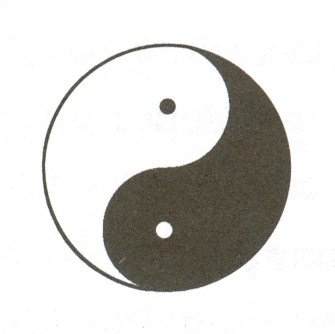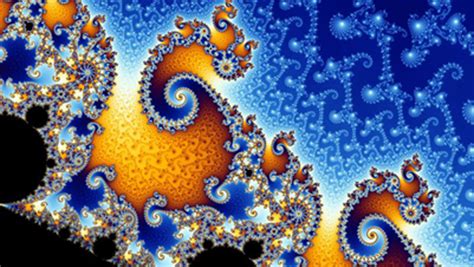|
home | what's new | other sites | contact | about |
||||
|
Word Gems exploring self-realization, sacred personhood, and full humanity
Quantum Mechanics
return to "Quantum Mechanics" main-page
Kairissi. This is an important topic. We’re not usually called upon for discussion unless it is, but a “redefining of truth” is especially weighty. Elenchus. This whole subject of “What is truth?” was one of the first that the author wrote about when WG was new, over 20 years ago. Here's an excerpt: If we say, The arrow, finding its mark, flew straight and "true," we mean that the trajectory of the arrow was exactly as we wanted it to be, an excellent correspondence between our intended target and the flight-path of the arrow. The expression, The painting is a "true" expression of the apples, means that the artist's depiction of the fruit corresponds very well with the actual 3-dimensional objects sitting on the kitchen table. If we say that something is when, in fact, it is not, we have not spoken the "truth," speech is not "true"; in other words, there is no correspondence between what we say and the realities of the external world. K. I still recall the reference to the book, “The Education Of The Founding Fathers.” There was a line that went something like, “The Founders, trained in the old scholastic way, believed that there was such a thing as truth, and they wanted to get at it.” E. I have to admit, that sentiment resonates deeply with me, too. However, there's something wrong with that statement that leads us astray. K. It's very subtle. We would not even have noticed but for our studies in quantum mechanics. So, Elenchus, explain to everyone the nettlesome issue. E. It’s all very Newtonian. For a very long time, science has been more than confident that absolute truth is something objective. K. Tell us what “objective” means here. E. It means that truth is like an object, separate from ourselves. K. “I’m here, and truth is over there.” E. It’s independent from us, it exists whether we know about it or not. Truth and "what is" is something "out there," and we have to "go out there" to "get at it." But there are problems with this view of separation. K. I like Dr. John Wheeler’s image of the scientist, safely behind the “thick plate glass,” he said, conducting his experiments, imagining that he or she is totally detached from the subject under review. But it doesn’t work that way. We change whatever we look at. Wheeler said that the term “observation” is out of date and that we should use “participation.” E. This is what Einstein couldn’t accept. In his debates with Bohr, he came up with phrases meant to disparage this quantum interconnectedness. He talked about the mouse that looked at the night sky, and does this change the state of the universe? – or, he said, is the moon somehow affected when we’re not looking at it? K. These are difficult issues, and it’s not that macro-items like the moon just pop in and out of existence when we turn our heads, but, the fact remains, when a quantum entity is observed, it can instantly change from a wave to a particle. E. The purpose for, what needs to be, a short talk from us cannot explore all facets of this very large subject. But what we want to do is to point out that this quantum indeterminacy alters the traditional definition of “truth.” K. And that alone will be enough for one discussion. So, what does this really mean, Elenchus? E. Dr. Mortimer Adler’s “Syntopicon Essays” distill the discussion of thinkers during the last 2500 years on what he called the 101 “Great Ideas” of history. Among these, he pointed out, “truth” has been traditionally defined as a kind of one-to-one correspondence between reality “out there,” so to speak, and our estimations of it. K. Our theories are “true” if they match what’s really “out there.” E. And "untrue" if there's a discrepancy. This has been the time-honored way of defining “truth.” And, in many respects, it’s a great working definition. And, certainly, on the macro-level of reality, it works fairly nicely. K. This is Newtonianism. E. However, on the micro-level, Newton’s three “laws of motion” no longer apply. To everyone’s surprise, it was discovered, about a hundred years ago, that Newtonian mechanics had to surrender center stage to quantum mechanics. K. Tell our readers how this affected the traditional definition of truth as “one-to-one correspondence.” E. For those who haven’t looked into this, it won’t make any sense. But, on the quantum level, there is no predictable "clockwork universe"; there is no solid objective reality – well, strictly speaking, there’s none even on the macro-level, but at least there it can appear to be so – but, on the level of the ultra-small the charade is completely dispensed with, “matter is completely mutable,” said Dr. Fritjof Capra, and “it can be created from energy and can vanish into energy”; there are no “hard little bee-bees” as elementary particles, no "building blocks of the universe," for, upon close inspection, they disappear “down the rabbit hole” into a nothingness; matter and antimatter continually collide in so-called “empty space,” a dance of creation and destruction. And, what may be even more disconcerting, an experimenter’s observations, and intentions, meaning, a desire to focus on one aspect of a particle’s characteristics, can bring that trait into existence and deny existence to other potential traits. K. What we begin to perceive, or, the question is begged: How can there be a one-to-one correspondence between our theories and objects of reality “out there” when what’s “out there” is continually shifting and losing or gaining existence? E. It’s very problematic. K. I think Dr. Wheeler’s comment becomes dispositive to any definition of truth. The “participator” is very much involved in the construction of reality. And this has to mean that “truth”, in some sense, is a plastic thing, moldable in our hands. It’s not “set in stone,” and not just "out there," as humankind has believed for thousands of years. E. It's not that reality is all over the place but more that it does not exist with straight edges and precise location but within parameters of probability. K. The implications of what we’ve briefly outlined here cannot be contained in a nice, neat package, wrapped with a bow, and all done. We will be exploring what all this means for a very long time to come, and even into the next worlds.
Editor's note: Concerning the lack of straight edges consider the micro-world of fractal geometry:
|
||||
|
|

